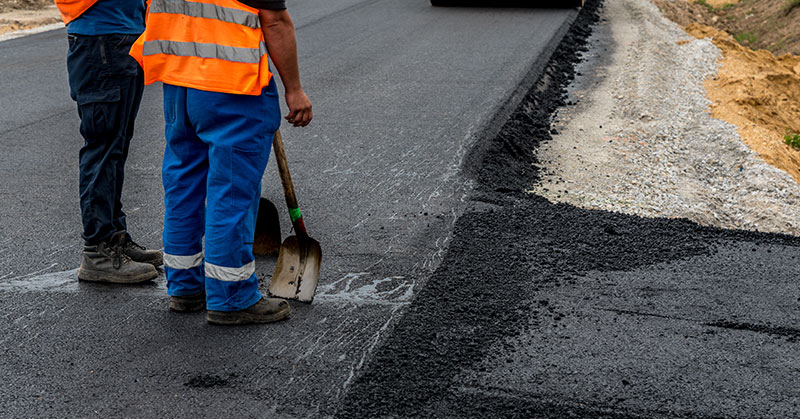You don’t have to be planning a career in the paving industry to benefit from understanding some paving terminology. Whether your upcoming paving project is a small driveway or a massive commercial parking lot, it will help if you understand some terminology commonly used by paving contractors so you can understand the scope of your project and know what to expect. What follows is part 1 of our paving glossary.
- Accelerator: If you have a concrete paving project that needs to be complete in a hurry, your contractor might add a material additive to the concrete mix to help it harden. This additive is called an accelerator.
- Aggregate: Aggregate is a combination of rock, crushed stone, sand and other organic material. Aggregate is the key ingredient used in both asphalt and concrete.
- Alligator Cracking: There are many different types of damage that can occur in asphalt and concrete, and alligator cracking is one of those. Just as the name implies, alligator cracks are tiny cracks in the surface of the pavement that almost resemble the skin of an alligator.
- Ballast: The base for concrete pavement is comprised of a layer of gravel and other organic material. Referred to as the “ballast,” this base provides a strong and solid support for the pavement that is poured over the top.
- Bituminous Pavement: Asphalt is sometimes referred to as a “bituminous pavement” because it can flex to a certain extent without breaking. This is especially important in instances when the soil below the pavement shifts, which can cause damage to a surface that isn’t flexible enough to withstand it.
- Catch Basins: Providing adequate drainage is vital to protect newly paved surfaces, whether they’re asphalt or concrete. Catch basins are used to collect rain and irrigation water and divert it away from the pavement and into a drainage system.
- Crack Sealing: An important part of maintaining any paved surface is the repair of minor damage. Even the smallest crack can allow water to penetrate below the surface, weakening and damaging the asphalt or concrete. Crack sealing is one way of repairing and sealing off minor cracks to prevent water from seeping into the pavement.
- Fabric Overlay: Many paving contractors use fabric overlays over the base of a paved surface as an added measure of protection from water seeping into the base.
- Grading: Contractors go to great lengths to prepare a surface prior to pouring concrete or asphalt. Part of that process is grading, which involves leveling the ground where the pavement will be installed.
- Hot Mix Asphalt Pavement: Different types of asphalt are used in different circumstances. Hot mix asphalt consists of liquid asphalt and aggregate that is combined in a hot mix facility and transported to the site then spread before it has a chance to cool.
We hope that this list of commonly used paving terms helps you to know what to expect with your upcoming paving project! But this is only a partial list – there’s more to come. We’ll continue with our glossary of terms in our next blog.
